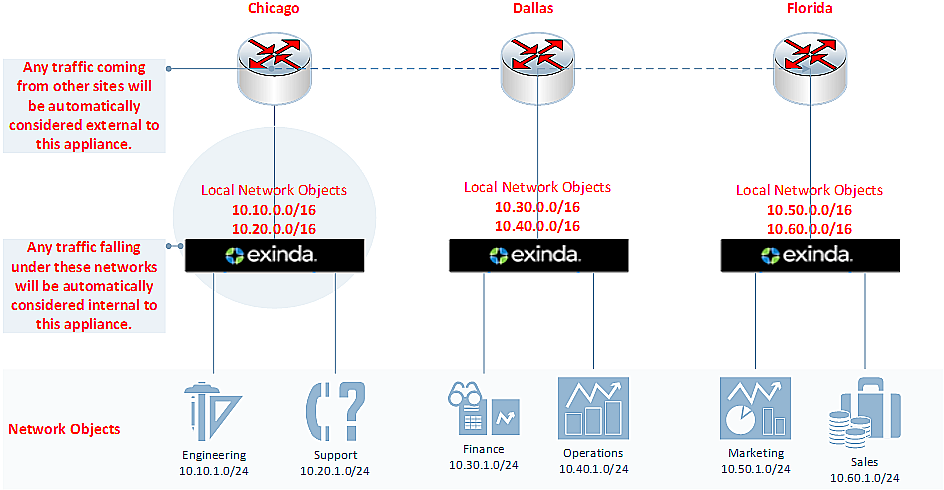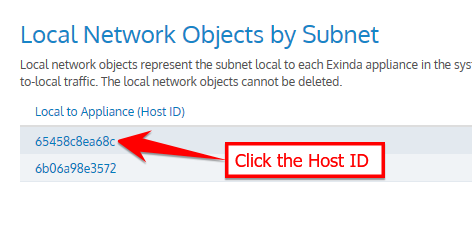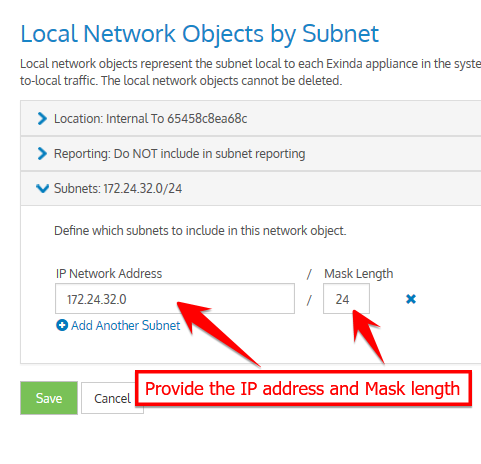Configuring local network objects in the EMC
Local network objects define which part of the network is considered as the local area network relative to an appliance.
Local network objects take their definition from an IPInternet protocol network address and mask length to identify the range of IP addresses that exist in the LANLocal area network behind the appliance. You can define a local network objecta logical definition created and stored in the Exinda lilbrary, can represent any network component for each appliance, so that each appliance can differentiate between traffic that is external and internal to the LAN on which it operates. The local network objects cannot be deleted.
For reporting purposes, hosts and users are defined as internal or external by comparing the IP address with the network objects.
EXAMPLE
Considering that there are three sites, Chicago, Boston, and Dallas where each site has an appliance, and each appliance has a local network object. Do the following:
- Create network objects to represent the Chicago site, the Boston site, and the Dallas site.
- On the Chicago appliance, when compared to the appliance's local network object, the Chicago network object gets set as internal, and the Boston and Dallas network objects are set as external.
- On the Boston appliance, the Boston network object gets set as internal, and the Chicago and Dallas network objects are set as external.
In the EMCExinda Management Center, SaaS service to centrally monitor and configure multiple Exinda appliances configuration, local network objects are appliance specific, so appliances cannot share these objects.

Diagram depicting separated local network objects for each appliance.
To configure the local network object:
- Go to Configured Appliances > Local Network Objects.
- Click Local to Appliance (Host ID) of the appliance to configure the local network object.

- Key-in the IP Network Address and Mask Length.

Defining local network object by subnet.
- Click Save.
NOTE
If the IP address and mask length you define are illegal, the EMC returns a warning and provides a suggestion for correcting the issue.

Defining local network object by subnet.